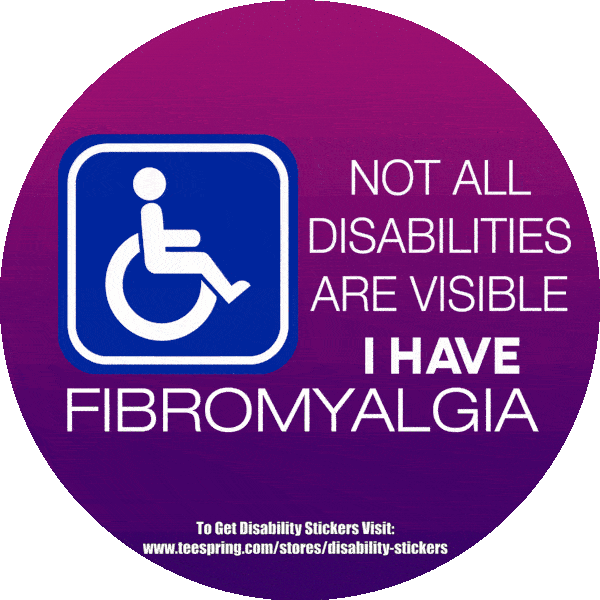Fibromyalgia and Central Sensitivity Syndromes
A ‘Family’ of Associated Illnesses
Fibromyalgia (FMS) and chronic fatigue syndrome (ME/CFS) are challenging illnesses to classify. Both have a wide range of physical signs, and they’re related with many psychological symptoms as well. In addition, they’re often accompanied by a slew of other illnesses, many of which are also tough to categorize.
As scientists are getting more of a grip on FMS, ME/CFS and other related illnesses, an umbrella term that’s more often used to describe them is central sensitivity syndromes, or CSS. Some researchers debate that this term should substitute other terms, such as functional somatic syndrome, medically unexplained syndrome, and somatoform disorders, because they believe CSS is more precise.
Though we don’t completely understand the relationships between such conditions, some researchers now trust FMS, ME/CFS, and many causes of chronic pelvic pain are all in a family of diseases called central sensitivity syndromes (CSS). All CSS include an underlying mechanism termed central sensitization, which includes defects in your brain and nerves that make you enormously sensitive to a variation of things, such as pain, temperature, and sound.
What is a Central Sensitivity Syndrome?
A disease defined as a CSS comprises something called central sensitization. Central means the central nervous system, which is made up of your brain and spinal cord. Sensitization is the end result of something that has made you sensitive.
Allergies are the kind of sensitivity people are normally the most familiar with. In allergies, your body has an unsuitable physical reaction to something that doesn’t trouble other people at all. In fact, while the sensitivities of a CSS aren’t precisely allergies, they do involve an unsuitable physical reaction.
In a CSS, we become sensitive to things that are processed by the central nervous system, which can include bright lights, loud noises, strong smells, rough textures, and pressure on the body. It may also include certain diets or chemicals. Especially in FMS, the body is alerted to anything unpleasant, i.e., cold, heat, a tickle or an itch.

via Fibro Daze
Apart from FMS and ME/CFS, the following conditions have been proposed to be part of the CSS family:
- chronic pelvic ache, with vulvodynia
- headache and migraine
- idiopathic low backache
- interstitial cystitis (painful bladder)
- irritable bowel syndrome
- multiple chemical sensitivity
- myofascial pain syndrome
- primary dysmenorrhea (aching period)
- restless legs syndrome
- temporomandibular joint disorder (TMJ)
Psychiatric illnesses are also common in CSS. Research proposes that’s for the reason that they all involve dysregulation of the similar neurotransmitters, with the dysregulation in CSS in different regions of the brain than in psychiatric illnesses. Psychiatric conditions that usually overlap with CSS include:
- major depression
- obsessive-compulsive disorder
- bipolar disorder
- post-traumatic stress disorder
- general anxiety disorder
- panic attack
Features of CSS
Neurotransmitters that are involved in at least some of the CSS include:
- serotonin
- norepinephrine
- dopamine
- GABA and glutamate
The pain of CSS originates from a couple of different abnormal pain types: hyperalgesia and allodynia. Hyperalgesia takes usual pain from things that everybody considers painful (a broken limb, an infected tooth, etc.) and makes it worse. It’s usually referred to as “turning up the volume” of pain.
This makes things like injuries, surgeries, and lingering reasons of pain especially debilitating. Allodynia makes you sense pain from things that shouldn’t hurt, such as the brush of fabric against your skin, or your arm resting against your side when you sleep.
Allodynia can make your clothes painful even when they’re not too close-fitted, or make you unable to hug. It turns all means of normal experiences into painful ones, which often means making important changes to your life to reduce it. Other proposed mechanisms of CSS include:
- Inflammation in or originating in the nervous system
- autonomic nervous system dysfunction
- dysfunction of the HPA axis, which is portion of the body’s stress-response system
Treating Central Sensitivity Syndromes
The different individual symptoms and mechanisms of each CSS need a customized treatment method, but in general, most CSS tend to respond to some of the same kinds of treatment, particularly antidepressants (which assist correct neurotransmitter dysregulation), exercise, and cognitive behavioral therapy (CBT).
However, it should be noted that individuals with ME/CFS have special considerations when it comes to exercise, and CBT is a highly debatable treatment for this illness, especially when it’s combined with graded exercise. While these conditions are thought to be related, it’s significant to get each one diagnosed and treated appropriately. Be sure to talk to your doctor about any signs that don’t seem to be connected to your recent diagnoses.
The CSS classification is good news for all of us with these conditions. It shows a positive change in how these ailments are understood and observed by the medical community. That’s what we need when it comes to getting research consideration, which leads to better diagnosis and treatment.
Fibromyalgia Disability Car bumper sticker: Lets put this sticker on your car and spread the fibromyalgia awareness. As many people out there don’t consider our illness as being disable, because they don’t know it. – Click Here to get Yours Fibromyalgia Disability Sticker for you Car
Click Here to Visit the Shop for more Products
For support and Discussion join the group “Living with Fibromyalgia and Chronic Illness” Subscribe to our website for Email notification of our new Posts. Like and Follow us on Facebook. Swipe Left to Read more on Fibromyalgia or Click Here …


